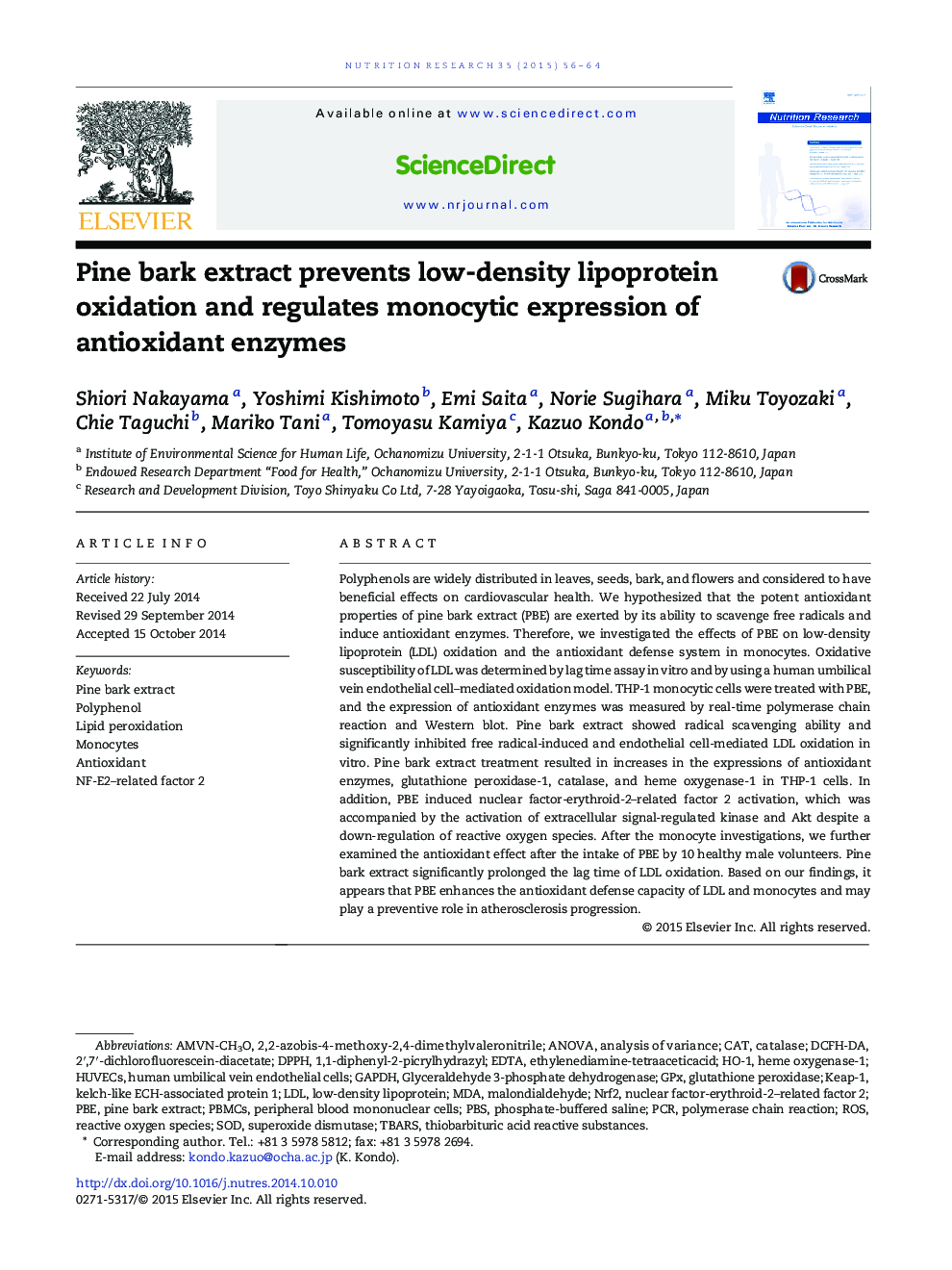| Article ID | Journal | Published Year | Pages | File Type |
|---|---|---|---|---|
| 2808957 | Nutrition Research | 2015 | 9 Pages |
Polyphenols are widely distributed in leaves, seeds, bark, and flowers and considered to have beneficial effects on cardiovascular health. We hypothesized that the potent antioxidant properties of pine bark extract (PBE) are exerted by its ability to scavenge free radicals and induce antioxidant enzymes. Therefore, we investigated the effects of PBE on low-density lipoprotein (LDL) oxidation and the antioxidant defense system in monocytes. Oxidative susceptibility of LDL was determined by lag time assay in vitro and by using a human umbilical vein endothelial cell–mediated oxidation model. THP-1 monocytic cells were treated with PBE, and the expression of antioxidant enzymes was measured by real-time polymerase chain reaction and Western blot. Pine bark extract showed radical scavenging ability and significantly inhibited free radical-induced and endothelial cell-mediated LDL oxidation in vitro. Pine bark extract treatment resulted in increases in the expressions of antioxidant enzymes, glutathione peroxidase-1, catalase, and heme oxygenase-1 in THP-1 cells. In addition, PBE induced nuclear factor-erythroid-2–related factor 2 activation, which was accompanied by the activation of extracellular signal-regulated kinase and Akt despite a down-regulation of reactive oxygen species. After the monocyte investigations, we further examined the antioxidant effect after the intake of PBE by 10 healthy male volunteers. Pine bark extract significantly prolonged the lag time of LDL oxidation. Based on our findings, it appears that PBE enhances the antioxidant defense capacity of LDL and monocytes and may play a preventive role in atherosclerosis progression.
